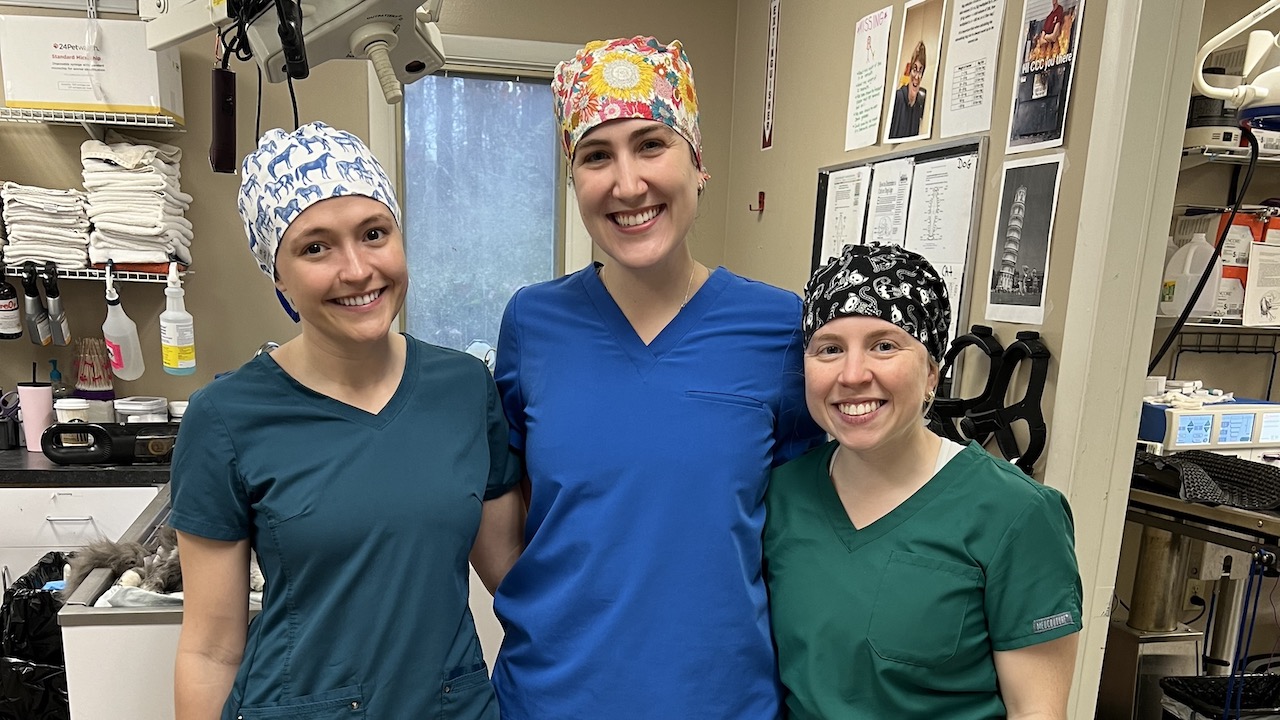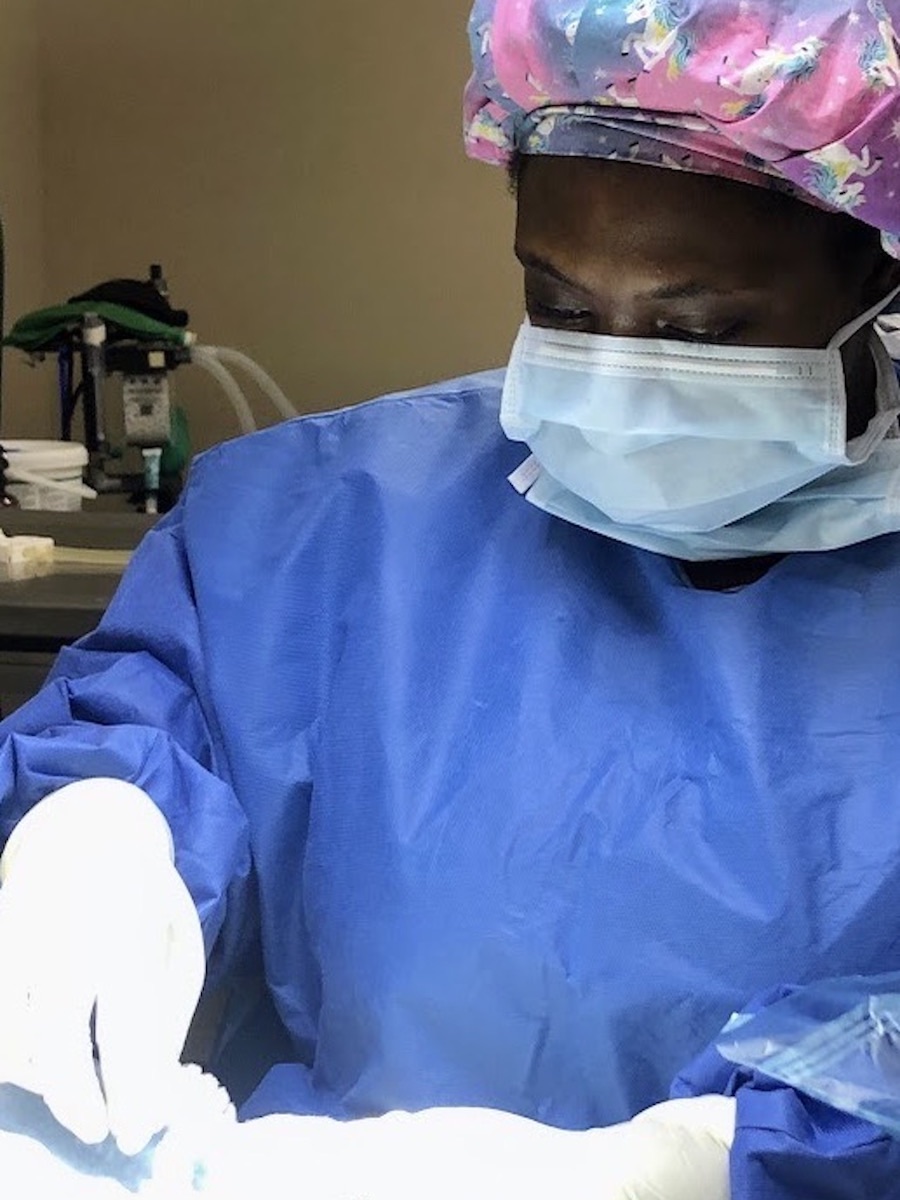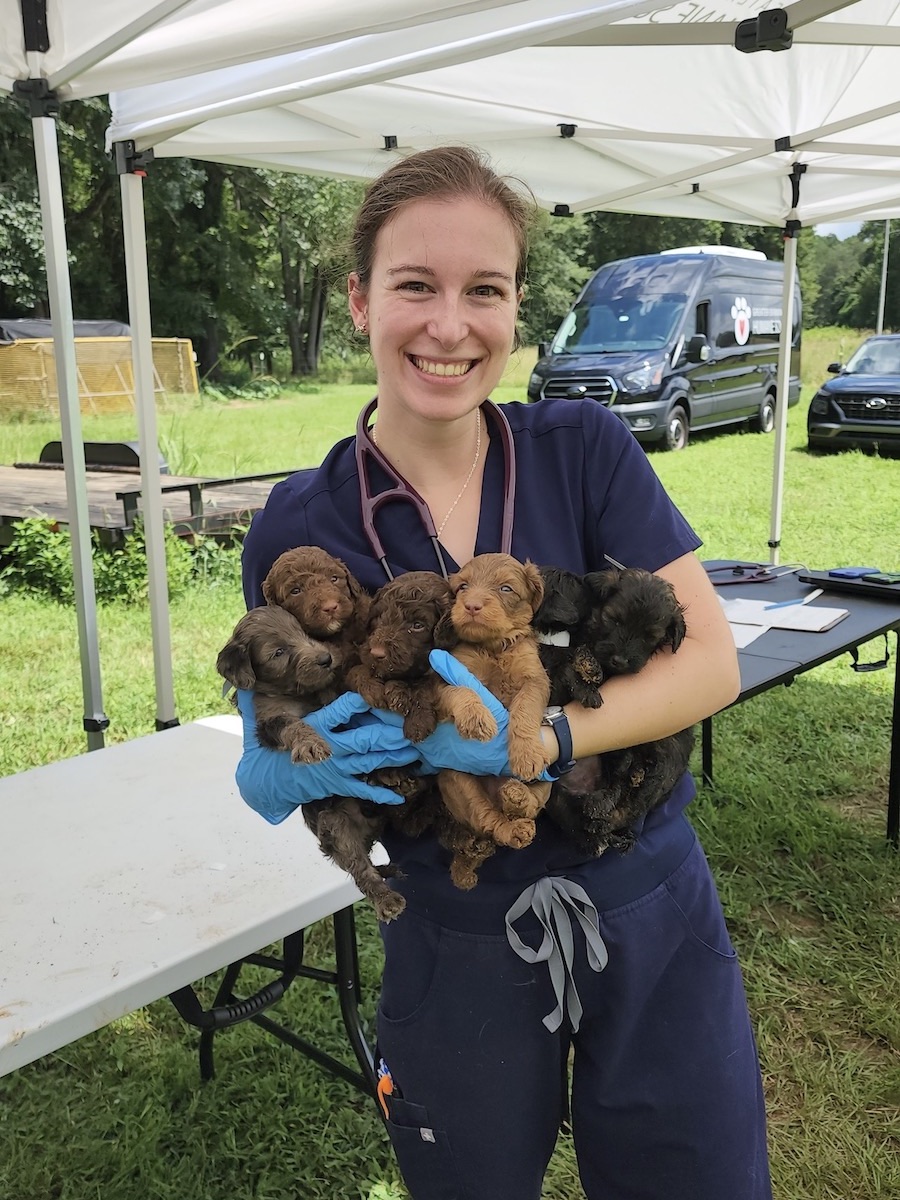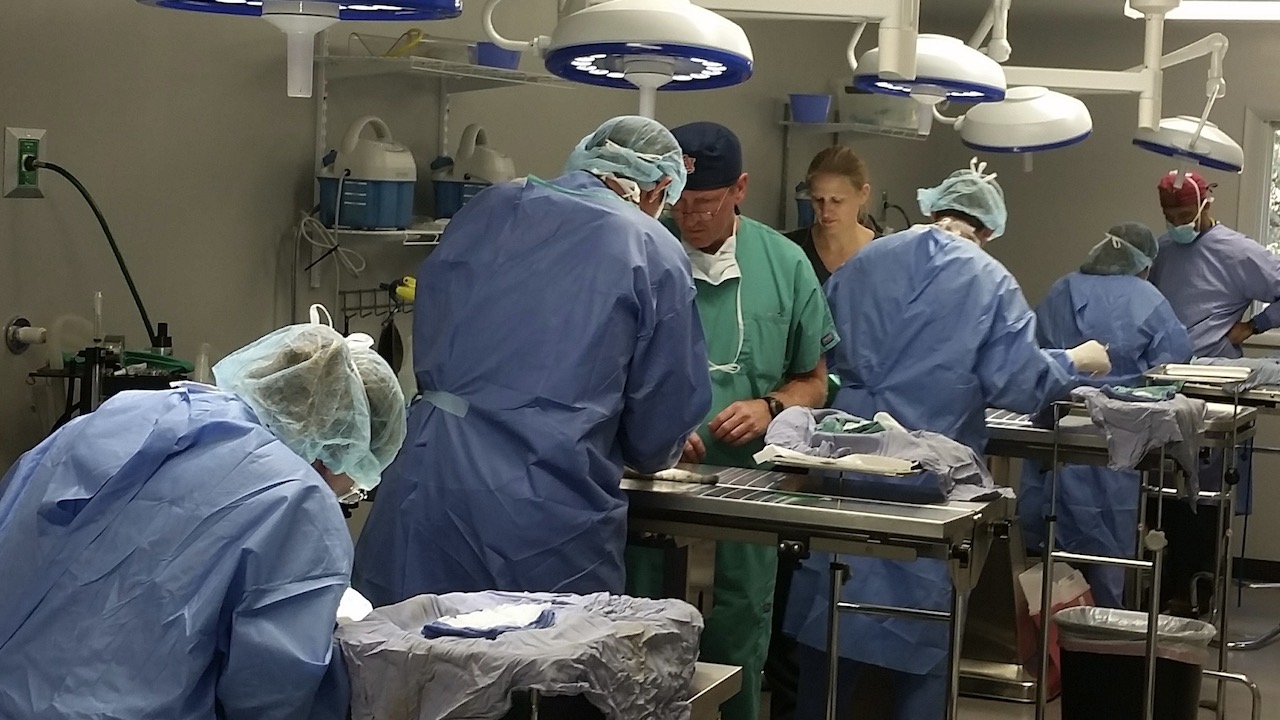content body
In a country with an estimated 70 million homeless cats and dogs, a 10-year partnership between the Auburn University College of Veterinary Medicine (CVM) and the Greater Birmingham Humane Society (GBHS) makes a difference, one animal and one aspiring veterinarian at a time.
And that difference is adding up.
Through a two-week required shelter medicine rotation with the humane society, hundreds of CVM students have had the chance to perform more than 50 spay and neuter surgeries under the guidance of an experienced veterinarian.
With GBHS taking in more than 18,000 animals a year, the partnership also has given thousands of unowned animals a better chance for adoption every year, said CVM Dean Calvin Johnson.

CVM seniors Carly Lyle, Taryn Pavain, and Kenzi Kittell participating in a shelter medicine rotation in partnership with the Greater Birmingham Humane Society.
Vets with better training; animals with better chances
The idea for the CVM-GBHS partnership was born in 2014. Costs for contracting with regional veterinary clinics were growing, and the Alabama Veterinary Practice Act prevented most animal shelters from providing spay and neuter services internally. These challenges were straining the 130-year-old society’s ability to achieve its mission.
Allison Cornelius, then chair of the Alabama Veterinary Medical Foundation Board, was called in to help.
Cornelius, who now serves as GBHS’ chief executive officer, recalled telling the board, “We need to get these students exposed to shelter medicine and the realities of what’s going on with the majority of animals in their community.”
Her long-term hope, she said, is that the students understand the realities of homeless, neglected, and abused animals so as next-generation veterinarians, they can better inform public debates like one the society faced in 2014.
Johnson’s shorter-term goal is to give that generation more surgical experience.
“Our students needed to get as much hands-on training as possible over the course of their clinical year, so they could gain confidence and competence in their surgical skills,” he said.

CVM senior Shawndulynn James performs surgery during her shelter medicine rotation in partnership with the Greater Birmingham Humane Society.
Partnership bridges students’ studies to future practice
In April 2015, the first CVM students went to Birmingham to work under the guidance of experienced veterinarians with Alabama Shelter Veterinarians, a veterinarian-owned company providing services for GBHS. Students provided physical exams, performed spay-and-neuter surgeries and learned more about shelter operations.
Shawndulynn James is among about 80 students who recently participated in the shelter medicine rotation. Last summer, she performed more than 20 physical exams each day and spayed or neutered a total of 60 animals.
The experience, James said, cinched her decision to pursue shelter medicine as a career. As she nears graduation in May, James hopes to complete an internship and residency program in shelter medicine.
“The greatest benefit GBHS has given me is the confidence to know if my patients are healthy enough to perform surgery or not,” James said. “They also gave me the confidence to perform these necessary surgeries on my own. I gained an immense amount of trust and confidence in myself.”
Julie Reynolds, now a practicing small animal veterinarian who graduated with a Doctor of Veterinary Medicine in 2019, had a similar experience during her rotation in 2018.
“As a student, you only get a handful of surgeries, and those that you do get to do are with a partner,” she said. “It was nice to be able to perform a whole surgery solo, but with someone there to be able to guide you when needed and answer any questions.”
Reynolds said the experience continues to inform her work.
“Aside from continuing to build on the confidence that was gained during this program, there are also surgical techniques, tips and tricks that I am able to still use today when doing spays and neuters,” she said.
Beyond performing exams and surgeries, some students gain experience in emergency veterinary response. GBHS is the southeast’s largest emergency medical response unit, Cornelius said, and when a hurricane or a puppy mill bust occurs, the students are critical in supporting those response efforts.

AU CVM Student Caitlyn Scagliarini assists with transfer exams at a doodle puppy mill in Anniston.
A proud past, a bright future
Cornelius and Johnson speak with pride about the partnership’s past, and they are excited about a new $70 million GBHS campus that will include a hospital and adoption center.
“This new facility will give us volume capacity that we can’t get based on the existing space,” Cornelius said. “You’re talking about doubling or tripling capacity.”
That additional capacity offers opportunities to grow the CVM-GBHS partnership, especially with philanthropic support. One current constraint is housing for the students while in Birmingham: In the partnership’s early years, student housing was offered, but they now must secure their own accommodations.
With continued support, Johnson said, the partnership’s future will be bright.
“The leadership of the Greater Birmingham Humane Society Board has a big vision,” said Johnson. “They want to help solve the problem of animal overpopulation and are driven to make a difference. This partnership’s been a good opportunity for us to contribute to their important mission, and it’s strengthened our college’s clinical training program at the same time.”
Become a Next-Generation Auburn Veterinarian
Learn More




